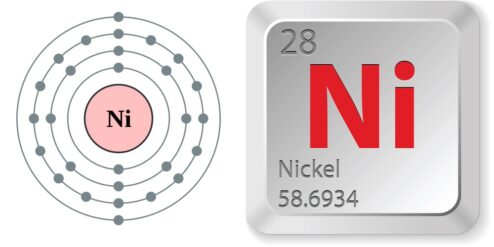Introduzione: Nickel is a naturally occurring element that is present in various food items, including grains. While it is an essential trace element necessary for the proper functioning of the body, excessive intake can lead to health issues. This article aims to provide an in-depth understanding of the relationship between grains and nickel, identify the grains high in nickel, discuss the impact of nickel-rich grains on health, and provide strategies for reducing nickel intake from grains. It also offers alternatives to high nickel grains in diet and presents some case studies to better understand the effects of high nickel grains on health.
Understanding the Relationship between Grains and Nickel
Nickel is present in the earth’s crust and thus finds its way into the food chain through soil and water. Grains, being a primary food source, often contain nickel. The nickel content in grains can vary depending on the nickel concentration in the soil where the grains are grown. Furthermore, certain processing and cooking methods can also influence the nickel content in grains. Understanding this relationship is crucial for managing dietary nickel intake.
Identifying the High Nickel Content in Various Grains
Among grains, wheat, rye, oats, and barley are known to have high nickel content. Whole grains, in particular, contain more nickel as most of it is concentrated in the outer bran layer. Besides, grains like millet, corn, and rice have comparatively lower nickel content. However, the actual nickel content can vary significantly depending on the soil conditions, cultivation methods, and processing techniques.
The Impact of Nickel-Rich Grains on Health
While nickel is a trace element necessary for the body, excessive intake can lead to nickel allergy or systemic nickel allergy syndrome (SNAS). Symptoms can range from dermatitis, itching, and redness to more severe reactions like asthma and chronic fatigue syndrome. Moreover, prolonged exposure to high levels of nickel is also associated with certain types of cancer. However, it’s important to note that the risk is higher for individuals with nickel sensitivity or allergy.
Strategies for Reducing Nickel Intake from Grains
To reduce nickel intake from grains, one can opt for grains grown in low-nickel soils or choose grains that naturally have lower nickel content. Additionally, refining grains can reduce their nickel content as most of it is concentrated in the bran. However, this might also remove other essential nutrients. Cooking methods can also influence nickel content, with boiling known to reduce it significantly.
Alternatives to High Nickel Grains in Diet
Alternatives to high nickel grains include grains like corn, rice, and millet, which have lower nickel content. Besides, one can also opt for a diet rich in fruits, vegetables, and lean meats, which are generally low in nickel. However, it’s essential to maintain a balanced diet and not eliminate grains entirely as they are a vital source of other nutrients.
Case Studies: Effects of High Nickel Grains on Health
Several case studies highlight the impact of high nickel grains on health. For instance, a study published in the Journal of Clinical Nutrition found a significant correlation between high dietary nickel intake and the prevalence of nickel allergy. Another study in the Journal of Allergy and Clinical Immunology reported a case where a patient with systemic nickel allergy syndrome showed significant improvement after following a low-nickel diet.
Conclusioni: While nickel is a necessary trace element, excessive intake, particularly through high nickel grains, can lead to health issues. It’s crucial to understand the relationship between grains and nickel, identify high nickel grains, and adopt strategies to manage dietary nickel intake. Alternatives to high nickel grains can help maintain a balanced diet while reducing nickel exposure.
Per approfondire:
- Nickel in foods and diets: This article provides a comprehensive overview of nickel content in various foods, including grains.
- Systemic nickel allergy syndrome: This study discusses the impact of dietary nickel on individuals with systemic nickel allergy syndrome.
- Nickel allergy and diet: This article discusses the role of diet in managing nickel allergy.
- Nickel content in whole grains: This study provides detailed information about the nickel content in various whole grains.
- Reduction of nickel content in food: This study discusses various methods to reduce nickel content in food.


